More Books
The Cape Odyssey 103

Featuring Woodstock
South Africa's Earliest Suburb
The Cape Odyssey 103 - the third book to be published in the new Cape Odyssey soft-cover series - embraces articles from the Woodstock Whisperer (2003 - 2007) together with new material and pictorials.
Woodstock, Cape Town's and South Africa's first real suburb, has a treasure house of historic stories and events. Treaty Park in Woodstock is the spot where, in 1806, the history of South Africa changed forever. One of the bravest sea rescues of maritime history took place from Woodstock Beach.
The volume captures for posterity articles that relate to this wonderfully colourful suburb.
The Forgotten Front

The significance of confrontations along the southern front during the Anglo-Boer War has inclined to be under-reported and hence strategically under-emphasised. This illustrated course undertakes to facilitate recollective justice to a ‘forgotten front’, particularly by means of the untold stories of the local people and common soldiers. The unmediated experiences of previously voiceless people during turmoil in a Karoo community are brought sharply into focus – though projected of necessity against the ravages and casualties of war. Because of battles elsewhere military chroniclers, even the usually punctilious British recorders, ignored or glossed over this phase and front of the war. The Anglo-Boer War, now more accurately referred to as the South African War, was neither “a gentleman’s war” or “a white man’s war” (references in earlier writings). In the region in question the descendants of the earliest inhabitants became equally embroiled in the conflict – as did brown and black South Africans. The role of women, too, was underacknowledged. Though enmity and depredation often prevailed, these lectures bring to the fore the human and humane, and even the humorous side of the adversaries.
Rogues to Riches

How did the influence of Simon van der Stel impact on the spectacular fortunes of Olof Bergh? Was it possible that the spoils of buried treasure plundered from a Portuguese shipwreck on secret instructions from the Governor finally enabled the old soldier to succeed Simon van der Stel as owner of Groot Constantia, the Cape's most precious home?
Marius Diemont, following on his book, the Strandveld - Africa's Foot of Isolation, about the Cape's southernmost coastal sector, delves into the fascinating history of Olof Bergh, one of the Cape's most colourful pioneers of the 17th and 18th centuries.
The Strandveld
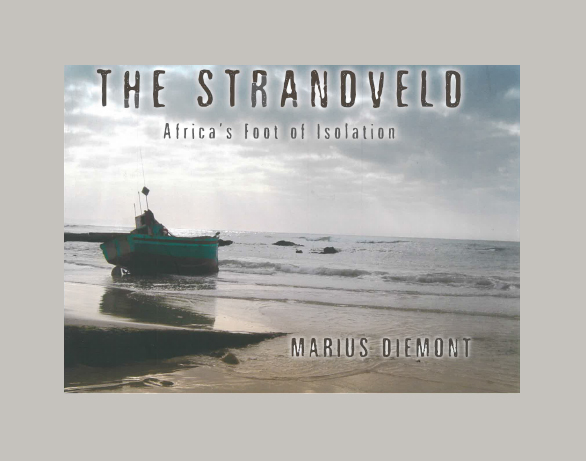
The Strandveld, not to be confused with the West Coast's Sandveldg is generally accepted to be the coastal region from Cape Infanta at the mouth of the Breede River the mouth of the Klein River, near Hermanus. Its eastern sector} through part of which the spectacular Whale Trail meanders, is a nature and marine re- serve controlled by Cape Nature Conservation.
From the west of Koppie Alleen, where the Whale 'frail ends, almost as far as Arniston, some 30 km away, the coast and abutting land are owned by Armscor, for use as a missile testing range. From just beyond Arniston to near Struisbaai, 20km to the west, including the mouth of the Heuningnes River, a haven of tranquility, Cape Nature Conservation is again the custodian, as is the case for several other substantial Strandveld sectors all the way to Hermanus.
The principal towns and resorts of the Strandveld are Bredasdorp, Napier, Arniston, Struisbaai, Agulhas, Elim, Pearly Beach, Kleinbaai, Gansbaai, Die Kelders and Stanford.
The Strandveld is remote and largely unspoiled. Its history of pioneers and shipwrecks is fascinating and its people colourful. I have been privileged to have known much of that coast for more than 50 years and 1 have a deep attachment for its isolation and splendour,
Life at the Cape over a hundred years ago
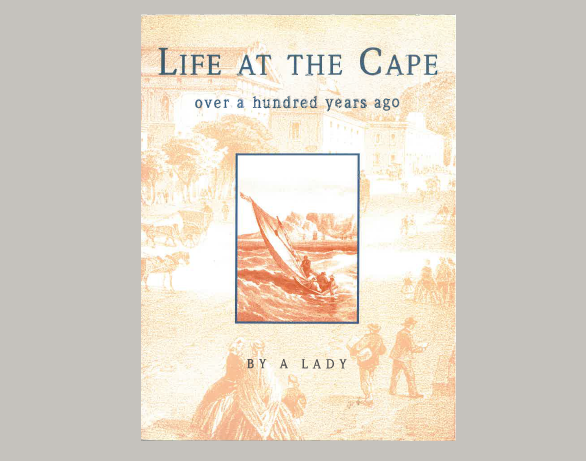
This fascinating book gives a day-to-day picture of life in Cape Town and its neighboring suburbs a century ago.
he Strandveld, not to be confused with the West Coast's Sandveldg is generally accepted to be the coastal region from Cape Infanta at the mouth of the Breede River the mouth of the Klein River, near Hermanus. Its eastern sector} through part of which the spectacular Whale Trail meanders, is a nature and marine re- serve controlled by Cape Nature Conservation.
From the west of Koppie Alleen, where the Whale 'frail ends, almost as far as Arniston, some 30 km away, the coast and abutting land are owned by Armscor, for use as a missile testing range. From just beyond Arniston to near Struisbaai, 20km to the west, including the mouth of the Heuningnes River, a haven of tranquility, Cape Nature Conservation is again the custodian, as is the case for several other substantial Strandveld sectors all the way to Hermanus.
The principal towns and resorts of the Strandveld are Bredasdorp, Napier, Arniston, Struisbaai, Agulhas, Elim, Pearly Beach, Kleinbaai, Gansbaai, Die Kelders and Stanford.
The Strandveld is remote and largely unspoiled. Its history of pioneers and shipwrecks is fascinating and its people colourful. I have been privileged to have known much of that coast for more than 50 years and I have a deep attachment for its isolation and splendour,
Hermanus History
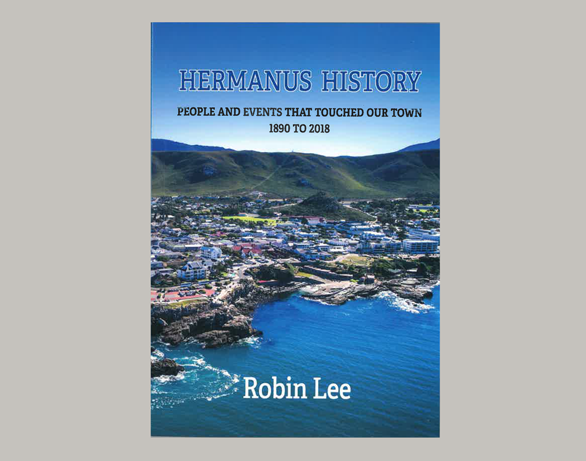
Hermanus history has unique elements: a healthy environment, marine attractions (fish, sharks, abalone and whales), and 'wild flowers' in profusion. The climate drew the wealthiest classes for holidays. In many cases it led to a lifelong interest in the town. Prime ministers, governors-general. European aristocracy, artists, writers and actors created their histories beyond Hermanus. But they had an influence on Hermanus. These nine essays examine the better-known of these visitors. What were their experiences in Hermanus? What were their lives beyond Hermanus? The case includes a general manager of South Africa Railways, an 'elephant whisperer', a recipient of the Victoria Cross, and the organiser of 'the Great Escape'. Each touched the town and the town folded them into it's history.
Robert Hart

Private Robert Hart, just 18, in the green-and-black kilt of the Argyllshire Highlanders, gazed in awe at the wild skyline of fantastic mountains in the Cape spring of 1795. This was at the end of a four—month voyage of confinement, scurvy, and general misery in a troopship. Hart did not guess that this would become his home and he himself the first of all English-speaking South Africans. Had he kept a diary, it could have been taken as a text book to the history of the Colony — from the arrival of the British troops at the first taking of the Cape, through the uprising in Graaif-Reinet, the arrival of the 1820 Settlers and the ensuing turbulent frontier wars — until his death in 1865. He served as adjutant of the Cape Regiment, he chose the site where Grahamstown now stands, he took Thomas Pringle on a memorable journey through the lichen-hung forests of the frontier, he managed the Somerset farm on the slopes of the Boschberg to supply produce to the British troops engaged in the hostilities and when this became Somerset East, he developed his own farm, the first fine wool grower in the Eastern Province. He was a close friend of Piet Retief and lived to see Port Elizabeth become, with Grahamstown, the trading base of the Free State and Transvaal Voortrekkers. Hart was a sincerely religious man who always had the welfare of the Presbyterian Church in mind. He was host to visiting missionaries who toured the country on horseback and would ask them to hold services in his house or garden which his Hottentot labourers and domestic servants could attend.
Sink the Birkenhead!
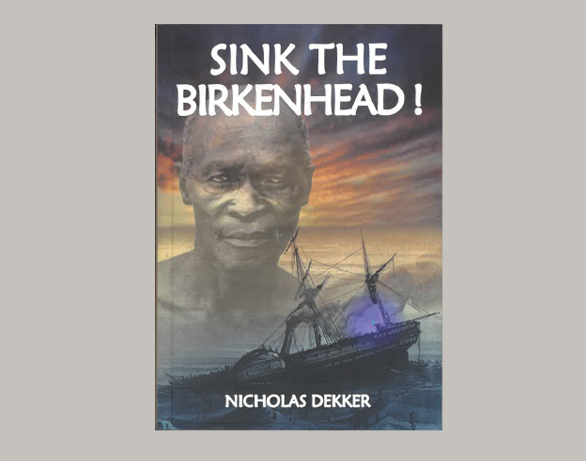
This book is not a work of fiction. Because of the way I choose to live and a certain innate curiosity, facts came to my notice that compel me to make them known. The wreck of HMS 'Birkenhead' which I began to explore half a century ago eventually led to the discovery how a great Xhosa Chief planned the destruction of British troopships without which the British Army were powerless to invade his country
If ever Black Affirmative Action is mentioned it should be noted that Xhosa Chief Maqoma initiated the action when he sank the troopship HMS 'Birkenhead' in 1852.
Grave Encounters
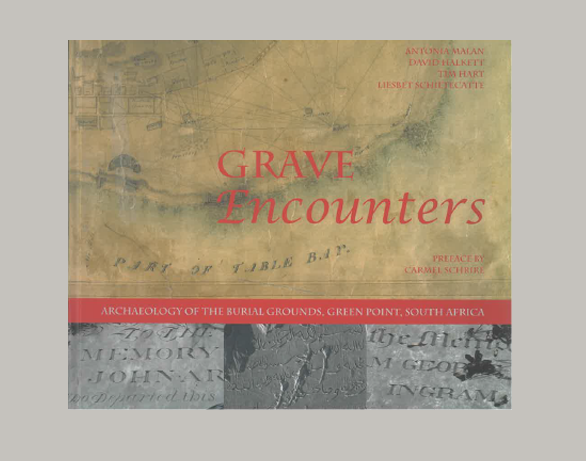
THE GRAVES of the dead lie buried around and beneath human habitations, and eventually they spread like a sub-terranean carpet beneath burgeoning cities and towns. In time, their markers - coffins, headstones, cairns, and wreaths - all disappear leaving an intermittent layer of bones. These rest undisturbed until space on the surface runs out, at which point they are exposed and excavated by the demands and consequences of urban growth. Gasps of wonderment, sighs of pity, and moans of fear, often greet the newly risen dead, but once they are reclaimed, voices rise as the living explore and contest ownership of their long-forgotten antecedents. The dead are scoured for markers of commonality, for the horrified thrill that emanates from the sight of death, and for what-ever treasures may have been buried in the graves. Grave Encounters explores this phenomenon as it plays out in the contested spaces of present-day Cape Town. Within its city bowl, ringed by sea and high mountains, lies a thousand-year record of human burial that now infringes on fabulously valuable real estate. It falls to hiningists. archaeologists, archivists, and civic authorities to retrieve and interpret the remains, and it becomes a burden taken on by their putative descendants to reclaim and control the bones themselves.
This wonderfully illustrated book describes these processes of discovery, retrieval and possession within an enchanting framework of empathetic scholarship. Archival documents and associated artefacts tell some-thing about political changes, social class, immigration and slavery, while the archaeology, physical and forensic anthropology, and chemistry, take things several steps further. Although not a single burial has a name nor a recognisable face, the bones, teeth, burial practices and chemical compositions reveal life histories that suggest where the long-dead people were born, what they thought about death, and the indisputable fact that whether they were rich or poor, free or unfree, they all lived and died within communities who respected their beliefs. This is a book that reveals the history of South Africa's Mother City - captivating, picturesque, and downright spooky - that rests on the long-forgotten bones of the people who made it.
Dr Phillip's Empire

One Man's Struggle for Justice in Nineteenth-Century South Africa
'For all those who have been wondering about the next book from one of South Africa's most elegant historical writers here it is.
With Dr Philip's Empire, Tim Keegan has done us a great favour. This exceptionally readable and deeply illuminating story of the fascinating and complex British missionary Dr. Philip is far more than a freshly opened window on the history of the colonial enterprise. It is, in fact, a tantalising microcosm- even parable - for the early liberal and humanitarian aspirations of empire and the twists and turns of their fall into decay and delusion.
A timely and important book, its cool and judicious historical perspective may also help to educate the present-minded ideological puritans fro whom the colonial past is nothing other than the evil Empire of Cecil John Rhodes.' Bill Nasson
Dr James Barry

A Woman Ahead of Her Time
Dr James Barry was many things in his life: Inspector General of Hospitals, army surgeon duellist, reformer, ladykiller, eccentric. He performed the first successful caesarean in the British Empire, outraged the military establishment, and gave Florence Nightingale a dressing down at Scutari. At home he was surrounded by a menagerie of animals, including a cat, a goat, a parrot and a terrier. But most astonishingly, long ago in Cork, Ireland he had been a young girl and a mother.
Hermanus Stories 3

SJ DU TOIT HAS DONE IT AGAIN
This is her third title in a series of reminiscences of Hermanus.
Like her previous books, Hermanus Stories iii tells us more of the people and events that make up life in the ever-changing seaside resort Hermanus. Meet the oldcharacters of the town - Micheal Clark, Glynis van Rooyen, Jan and Sandra Groenewald, Eugene le Roux, Chrissie van Wyk and many many more.
If you ever wondered about the origin of well-known landmarks in our area like De Mond, Habonim, the magnetic observatory and the Spookhuis - you will find interesting tit-bits and anecdotes of all of them here.
Those with longer memories will find added joy in reading about the days of the first telephone exchange and Heinie's Steakhouse. Written in down-to-earth style, this is a volume that will be cherished by everybody who loves Hermanus.
Hawston Tussen Berg en See

Dit is vir ons 'n groot voorreg en eer om hierdie boek op te dra aan ons oues van dae, die wat reeds oorlede is en hulle wat nog in die lewe is. Sonder hulle nagedagtenis en stories sou ons nie die boek kon saamstel nie. Ons bring hulde aan hulle en vereer hulle vir al die herinneringe en kennis wat hulle vir ons nagelaat het.
Through God's Grace we have accomplished this goal and we hope that it will be a blessing to the lives who read it.
Die vroeere geskiedenis van Hawston is nie gedokumenteer nie. Talle historiese dokumente is vernietig of het verlore geraak. Daar bestaan enkele argivale bronne, notules van verskeie instansies asook koerante waaruit ons inligting kon abstraheer. Ons het in die besonder staatgemaak op die mondelinge oorlewing van die inwoners van Hawston. Soms oorvleuel die verhale mekaar waar verskillende persone dieselfde gebeure vertel het. Ons is nie bekommerd oor die herhalingsfaktor nie; inteendeel die verskillende monde onderskraag besondere vertellings.
Luyt's Marine
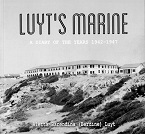
This is the diary of an active participant on the 'home front' of World War II. It covers the war years in Hermanus, a town in which airmen, sailors and soldiers came in thousands. many were on leave from local military duties, or on shore leave from troopships sailin around the Cape. Others were recuperating from injuries sustained in combat. Whatever their status, they were welcom at Luyt's Marine Hotel, where the owner Joey van Rhyn Luyt and her daughters, berdine Paddy and Connie took care of them.
The Luyt's believe that their wartime duty was to offer enjoyable times to all, knowing that most would be returning to the war front or had loved ones at risk. This book is a delightful indight into hotel life of the time, against a backdrop of global conflict. Scenes of domestic comedy alternate with accounts of how survivors of torpoed ships received the generous support of residents. Berdine Luyt's sharp eye rests humorously on a crisis in water supply, riotous parties at the marine and a local political meeting. "Luyt's Marine" will charm and involve you in events and characters that are clearly of the 1940's, but also recognisable today.
In those Days - The Story of Joey van Rhyn Luyt

In 1915 Hermanus , on the south western coast of South Africa, was an insignificant fishing village. By 1947 it was one of the pre-eminent sea-side holiday resorts in the country, and well known abroad. There were several reasons for this: a healthy climate; unequalled sea-angling; beautiful natural countryside and steadily improving road access.
The town was also blessed with entrepeneurial citizens, who saw the value of eco-tourism long before this became a catch phrase. At one stage in the 1930s Hermanus boasted 13 hotels and a large number of guest houses. Pre-eminent among the hoteliers were P John Luyt and his wife, Joey van Rhyn Luyt. Joey left a written memoir, detailing, but by no means limited to,her role at the Marine Hotel. She also describes P John's energetic publicising of Hermanus and his key role in local affairs
Noel Coward and the Marine Hotel:1944

Purely local history can be parochial and even self-regarding. The day to day doings of ordinary citizens seldom inpsire interest, much less enthusiasm, in toda's audiences. However, that danger is much reduced in the case of the Overstrand in general, and Hermanus in particular.
Almost since its first settlent the region has attracted visitors and permanent residents (usually retired) who command the attention of a wider audience. Based on their stay in Hermanus, the lives of these 'movers and shakers' outside Hermanus can be followed. In this case a world famous entertainer opens the door to contact with a Prime Minister, members of Parliament, famous actors, and a member of a Royal family.
In my experience, if you research a little for the 'back story' behind the person in Hermanus or the Overstrand, you will be amazed where the story ,may take you
The taking of the slaver Meermin 1766

In February 1766 while the slaver Meermin was returning to Cape Town from Madagascar with 140 slaves, some male slaves got a hold of a number of their native spears, killed most of the officers and crew on deck and trapped the remainder, some of them badly wounded, in a cabin in the stern of the ship. The fight raged for days, while the ship was carried helplessly along by wind, currents and tide it ran aground near Cape Agulhas.
The first complete account of the violent uprising on the hooker Meermin, entirely based on archival records, describes a desperate struggle on the open sea for freedom and survival. the dramatic tale of courage, bloodshed, endurance,death, deceit and betrayal, also sheds light on the economic and social conditions at the Cape at the time. Details are given about the origins of Cape slaves, why and under what circumstances they became slaves, with what were they bought, how were they transported, treated and employed by the Cape government, and how they were punished when they transgressed its laws.
Even the Cows were Amazed

Between the 16th and 18th centuries several European ships involved in trade with the East came to grief on the south-east African coast, the most famous being the Grosvenor. In almost all cases there were survivors, both passengers and crew, whose stories were later written down.
And what stories these are. Many parties undertook epic journeys on foot from the wreck site to reach places where they might be rescued. These journeys involved great feats of endurance for the survivors, who tramped by foot for hundreds of kilometers through unknown territory inhabited by people who European prejudices of the day regarded as hostile 'savages'. Even more remarkably, a few parties constructed their own small ships from the wreckage and sailed off to seek rescue.
The Cape Odyssey 105 - Wrecked at the Cape Part 2

South Africa has an extremely rich and internationally significant underwater cultural heritage. Since 1488 the Southern tip of Africa has occupied a pivotal position in global economic and maritime affairs, and tens of thousands of vessels from a host of countries have navigated this coast.
Some of the worst sea conditions anywhere in the world, combined with human error, inadequate anchorages and the poor physical condition of many of the vessels and their crews by the time they reached South African waters, have left South Africa with a legacy of more than 2400 known shipwrecks.
The Volmoed Journey

In celebration of the thirtieth anniversary of the Volmoed Community
The first edition of the Volmoed Journey was published in 2006 to celebrate the twentieth anniversary of the founding of the Volmoed Community.The last of the ten thousand copies printed at that time was sold at the beginning of 2016 just as we began our year long celebration of the thirtieth anniversary of this remarkable community located in this remarkable place. A place we believe God has set apartfor his ministry of healing and reconciliation. We were relative newcomers to Volmoed, having arrived in 2003, so our own journey as part of the community had only just begun. Now thirteen years later, we look back with great joy and thankfulness for being part of the ongoing story, even as we anticipate the next phase in Volmoed's journey.
The Historical Overberg

Traces of the Past in South Africa's Southernmost Region
Situated between the Hottentots Holland Mountains and the Breede River, the Overberg is a fertile agricultural region and a popular holiday destination for tourists and nature lovers who delight in the beauty of its mountainous landscape, abundant plant species and long sandy beaches. This area also has a rich history going back thousands of years, when the indigenous Khoi people originally thrived there, and when the first European settlers left their own indelible imprint on the culture, architecture and character of the region. The Overberg has been a home or point of interest for explorers, innovators, artists and writers, for figures as varied as Bartolomeu Dias, Sir David de Villiers Graaf, Uys krige and Audrey Blignaut. Some of South Africa's oldest Towns, houses and missionary stations can be found here, and its treacherous coastline has been the cause of hundreds of shipwrecks for centuries.
Hermanus Stories 1

Like SJ du Toit's other books on village life this book once again proved to be a book of a keen collector of stories and anecdotes of life in the village and later town of Hermanus.It gives a chronological account of early pioneers and the younger generation; of life in the fishermen's village, but also the development in an ever growing town.The stories are presented in an easy accessible style.
Some stories are in Afrikaans with an English translation.
Hermanus Stories 2

SJ du Toit continues her loving task of introducing stories and anecdotes of Hermanus and preserving it for generations to come.
After reading this book, a stroll through Hermanus as a non-Hermanusite, becomes a new adventure. Historical landmarks brings images of both an exciting, gracious and tranquil life, through the narrators echo in my mind.
The tales about the "fathers", "mothers" celebrities and eccentrics, and the makers of history are informative and entertaining.
The Overberg

A journey through the beautiful Overberg region. It contains anecdotes and other tales of 412 towns, villages and hamlets around the Overberg. These stories are presented in the informal style, characteristic of the author of the popular Stanford Stories and the trilogy of Hermanus Stories.
Spore oor die Overberg

Spore oor die Overberg neem die leser op 'n reis deur hierdie geliefde streek van ons land. Dit vertel die lekkerlees stories, anekdotes en staaltjies van sowat 41 dorpe en kleiner plekkies.
Stanford Stories I

The idea of the book was born in 1990 when the memoires of Muriel du Toit were penned. It was thought that a village and its community should know of its origin and history, recording and preserving it for posterity. With the assistance of Muriel, her daughter SJ du Toit collected stories and history of the village and Stanford Stories were born.The book is not intended to be a definite history but a collection of Muriel, SJ and a number of other people. There is no actual author, but only a collator who arranged the material. Several facts and dates have been verified at the Archives of Cape Town and London, as well as in the Deeds office. Many people also assisted and inspired in this task.
Stanford Stories II

Like its predecessor, Stanford Stories I, this book continues to include stories from the 19th and 20th century of a village with its rich historical background. I covers 270 yearsin the chronicles of this Strandveld town, giving a dreamlike account of much earlier tribal existence in the valley of which it will be impossible to present any complete story. An account of families of the past and present have also been recorded here. SJ du Toit who was born in Stanford and after many years returned and lived on the family farm.It was during this time that she started writing of the town of her birth and growing up years.
Hawston Tussen Berg en See

Dit is vir ons 'n groot voorreg en eer om hierdie boek op te dra aan ons oues van dae, die wat reeds oorlede is en hulle wat nog in die lewe is. Sonder hulle nagedagtenis en stories sou ons nie die boek kon saamstel nie. Ons bring hulde aan hulle en vereer hulle vir al die herinneringe en kennis wat hulle vir ons nagelaat het.
Through God's Grace we have accomplished this goal and we hope that it will be a blessing to the lives who read it.
Die vroeere geskiedenis van Hawston is nie gedokumenteer nie. Talle historiese dokumente is vernietig of het verlore geraak. Daar bestaan enkele argivale bronne, notules van verskeie instansies asook koerante waaruit ons inligting kon abstraheer. Ons het in die besonder staatgemaak op die mondelinge oorlewing van die inwoners van Hawston. Soms oorvleuel die verhale mekaar waar verskillende persone dieselfde gebeure vertel het. Ons is nie bekommerd oor die herhalingsfaktor nie; inteendeel die verskillende monde onderskraag besondere vertellings.
Boontjieskraal

Boontjieskraal, the white-walled farm along the N2-National Road , between Bot River and Caledon, is a well-known landmark. Now this farm’s history is revealed in a new book. Released on Tuesday, 23 April, to coincide with the International Book Day. Titled Boontjieskraal: The Story of a Farm and its People, the book covers the development of agriculture in the Overberg, starting with the issue of Loan Farms and follows the De-Wet clan from the arrival of the progenitor from the Netherlands to their ownership of Boontjieskraal.
The current owner of the farm, and fifth generation De Wet, to actually hold the title deed, continues the lineage, which started on Boontjieskraal around 1795. Writing in her mother-tongue, Afrikaans, she reminisces on days gone by; shearing time and harvest time and the carefree life of a child growing up on a farm. Anecdotes, and stories, and perhaps a smattering of gossip, illustrate the characters that help build the farm over the decades.
LOOKING FOR MRS LIVINGSTONE by Julie Davidson:

The Scots are not into heroes, but the famous explorer David Livingstone is probably as near as we get. Biograher Davidson, however, gives history a twist by focussing on his wife, Mary, daughter of the missionary family, the Moffats, and treading in her footsteps. This is a book about journeys.
Born in Africa, fluent in Setswana, Mary taught in the mission school in Kuruman, and had skills which equipped her to survive on an unforgiving continent. Much has been made of her unprepossessing appearance, but marriage to Livingstone was a love match, and she willingly accompanied him on two of his expeditions, crossing the Kalahari and reaching Lake Ngami, a double first for a white woman.
History of Hawston in English

The English translated version of the book ‘Hawston: Tussen Berg en See’, Hawston: Between Mountain and Sea, was launched at the first 2014 members meeting of the Hermanus History Society on Tuesday.
The success of the re-printed Afrikaans edition last year paved the way for the society to take on the translation as a project.
The process leading up to finding a translator took a while and started when Gladys Gillion, one of the authors, was listening to a programme on the radio station RSG (Radio Sonder Grense).
Murderers, Miscreant and Mutineers: Early Cape Characters.

After the AGM, members were riveted by the talk given by author Professor Nigel from the Department of History at UCT.
He has written about the impact of colonialism on the Khoisan societies of Southern Africa and the nature of early Dutch and British colonialism. At the meeting he spoke about his most recent book Murderers, Miscreant and Mutineers: Early Cape Characters. This is a series of historical narratives based on criminal cases found in the Cape archives. He discussed episodes explaining how these cases, drawn from the years 1700 to 1820, illuminate aspects of the social history of the Cape that are not accessible through other sources. In particular, he looked at issues related to sex and violence.
